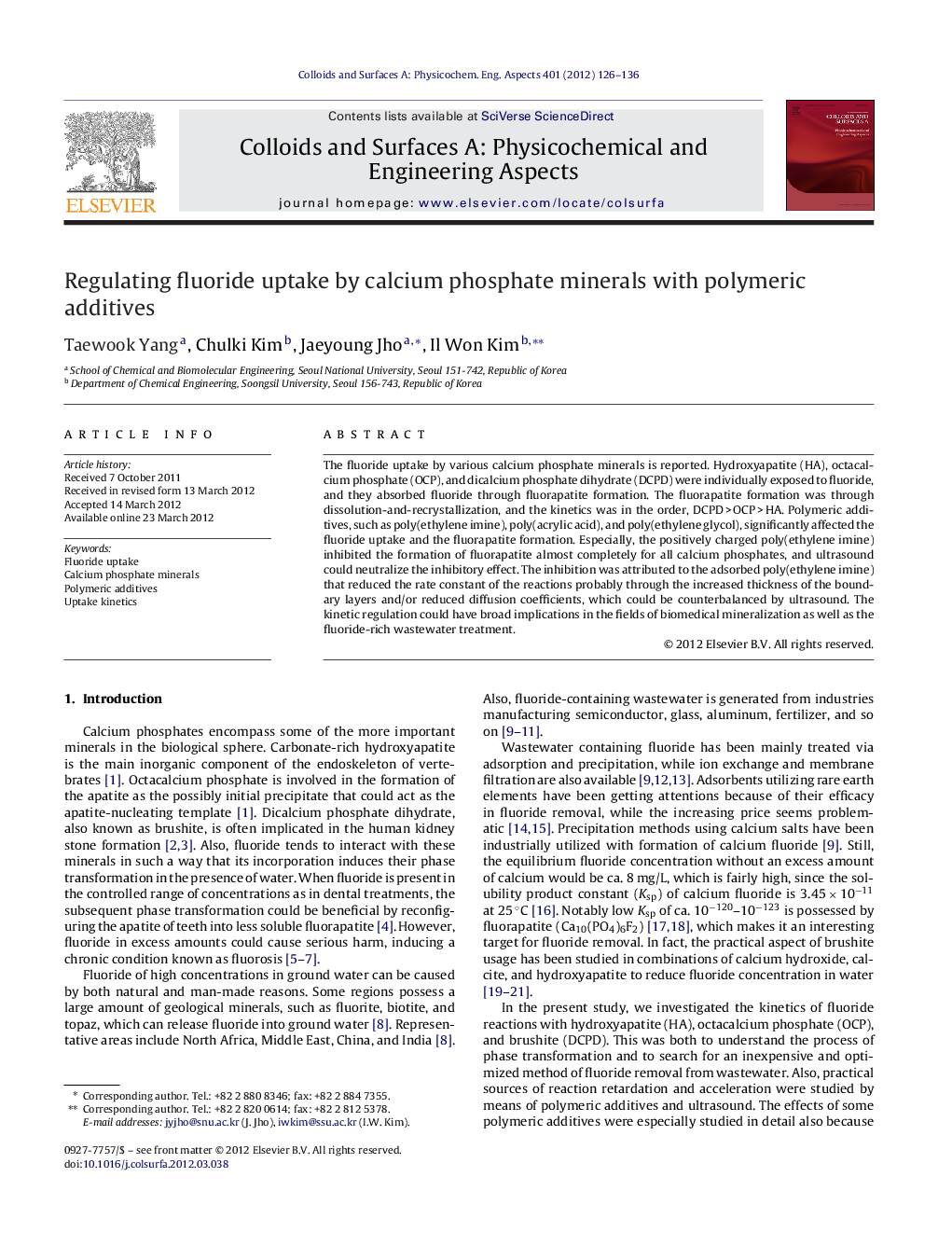| Article ID | Journal | Published Year | Pages | File Type |
|---|---|---|---|---|
| 594100 | Colloids and Surfaces A: Physicochemical and Engineering Aspects | 2012 | 11 Pages |
The fluoride uptake by various calcium phosphate minerals is reported. Hydroxyapatite (HA), octacalcium phosphate (OCP), and dicalcium phosphate dihydrate (DCPD) were individually exposed to fluoride, and they absorbed fluoride through fluorapatite formation. The fluorapatite formation was through dissolution-and-recrystallization, and the kinetics was in the order, DCPD > OCP > HA. Polymeric additives, such as poly(ethylene imine), poly(acrylic acid), and poly(ethylene glycol), significantly affected the fluoride uptake and the fluorapatite formation. Especially, the positively charged poly(ethylene imine) inhibited the formation of fluorapatite almost completely for all calcium phosphates, and ultrasound could neutralize the inhibitory effect. The inhibition was attributed to the adsorbed poly(ethylene imine) that reduced the rate constant of the reactions probably through the increased thickness of the boundary layers and/or reduced diffusion coefficients, which could be counterbalanced by ultrasound. The kinetic regulation could have broad implications in the fields of biomedical mineralization as well as the fluoride-rich wastewater treatment.
Graphical abstractFigure optionsDownload full-size imageDownload as PowerPoint slideHighlights► Kinetics of fluoride uptake by calcium phosphate minerals. ► Polymeric additives as the regulators of the fluoride uptake. ► Ultrasound to accelerate the fluoride uptake. ► Phase transformation of calcium phosphates into fluorapatite.
